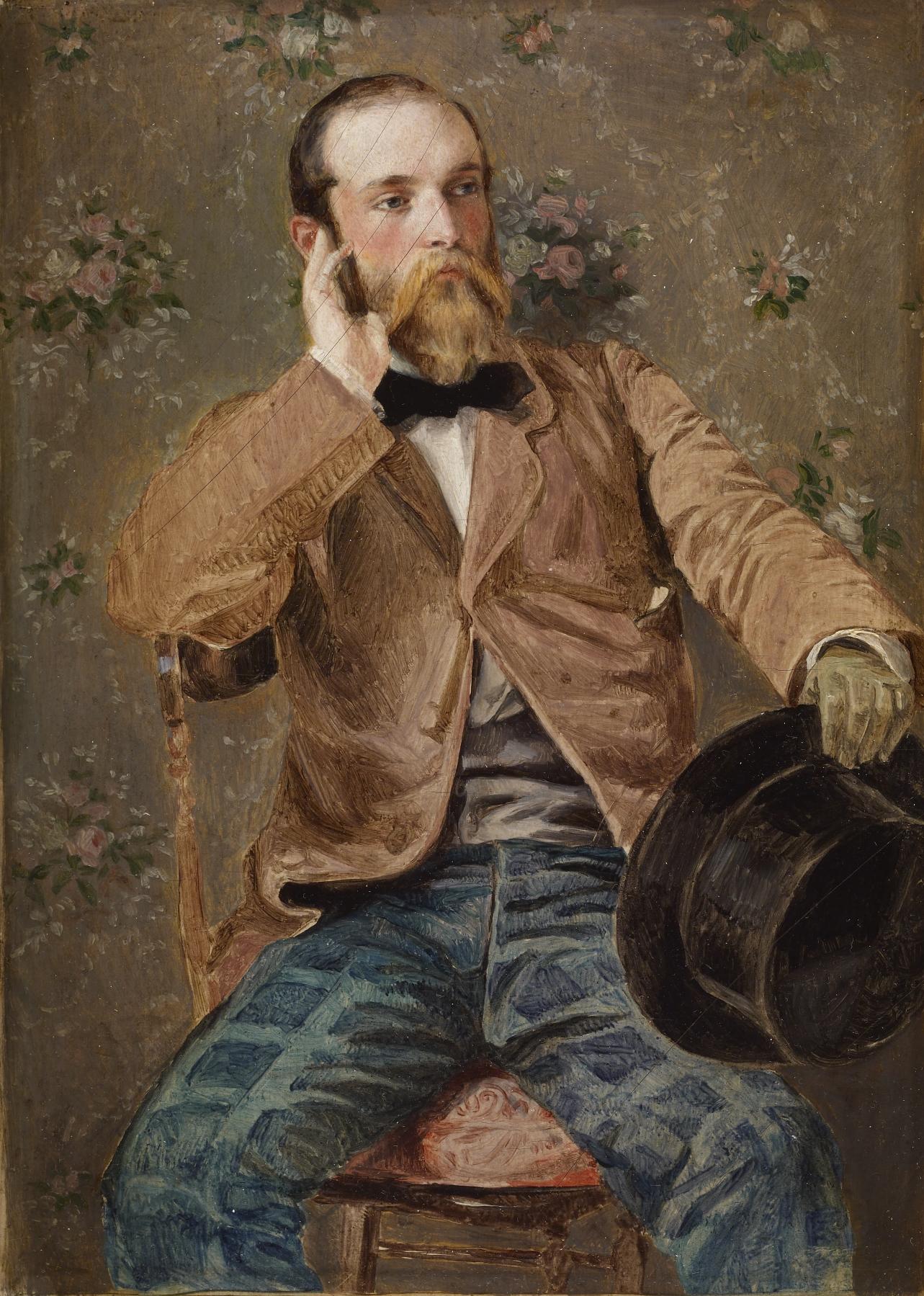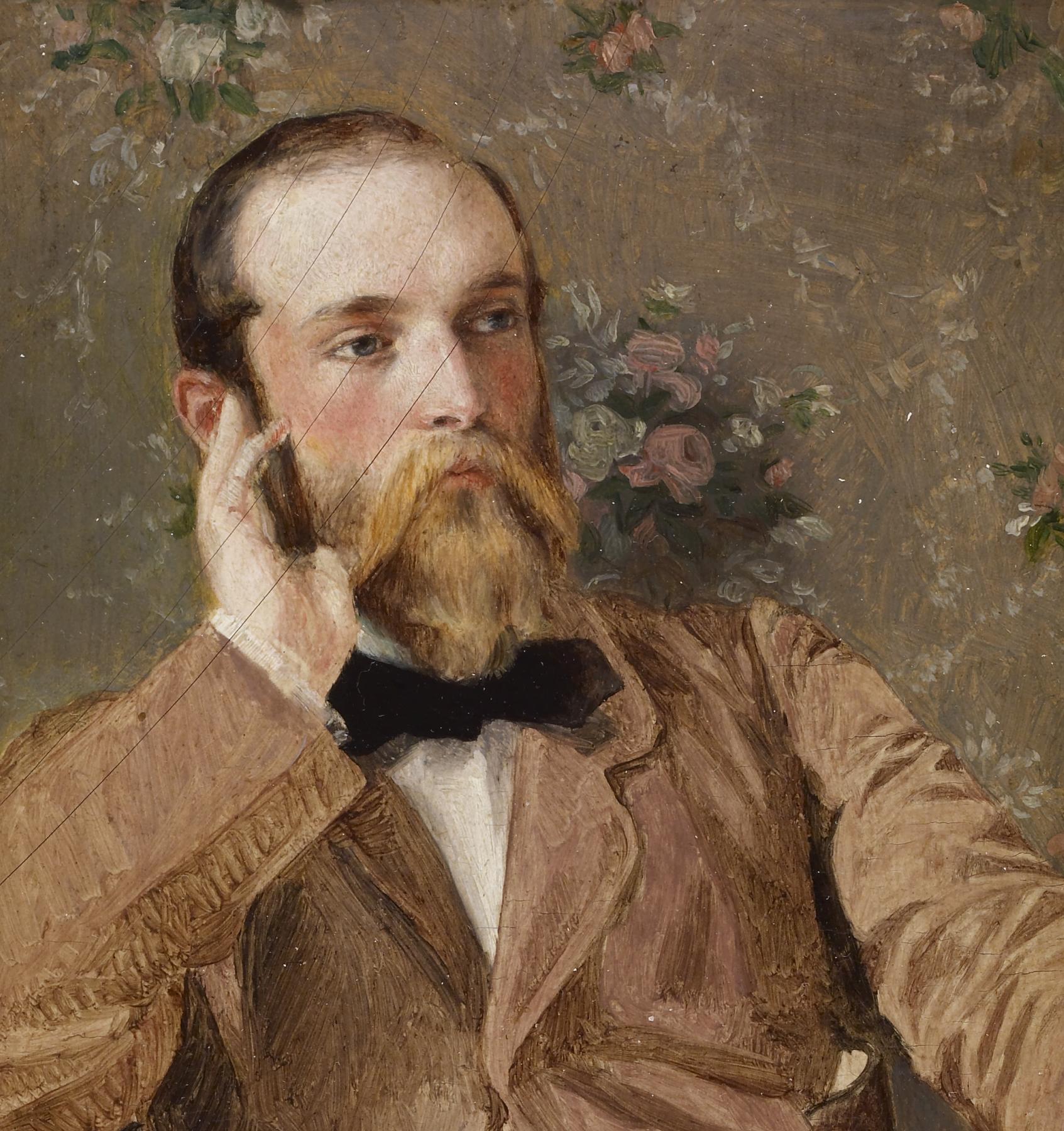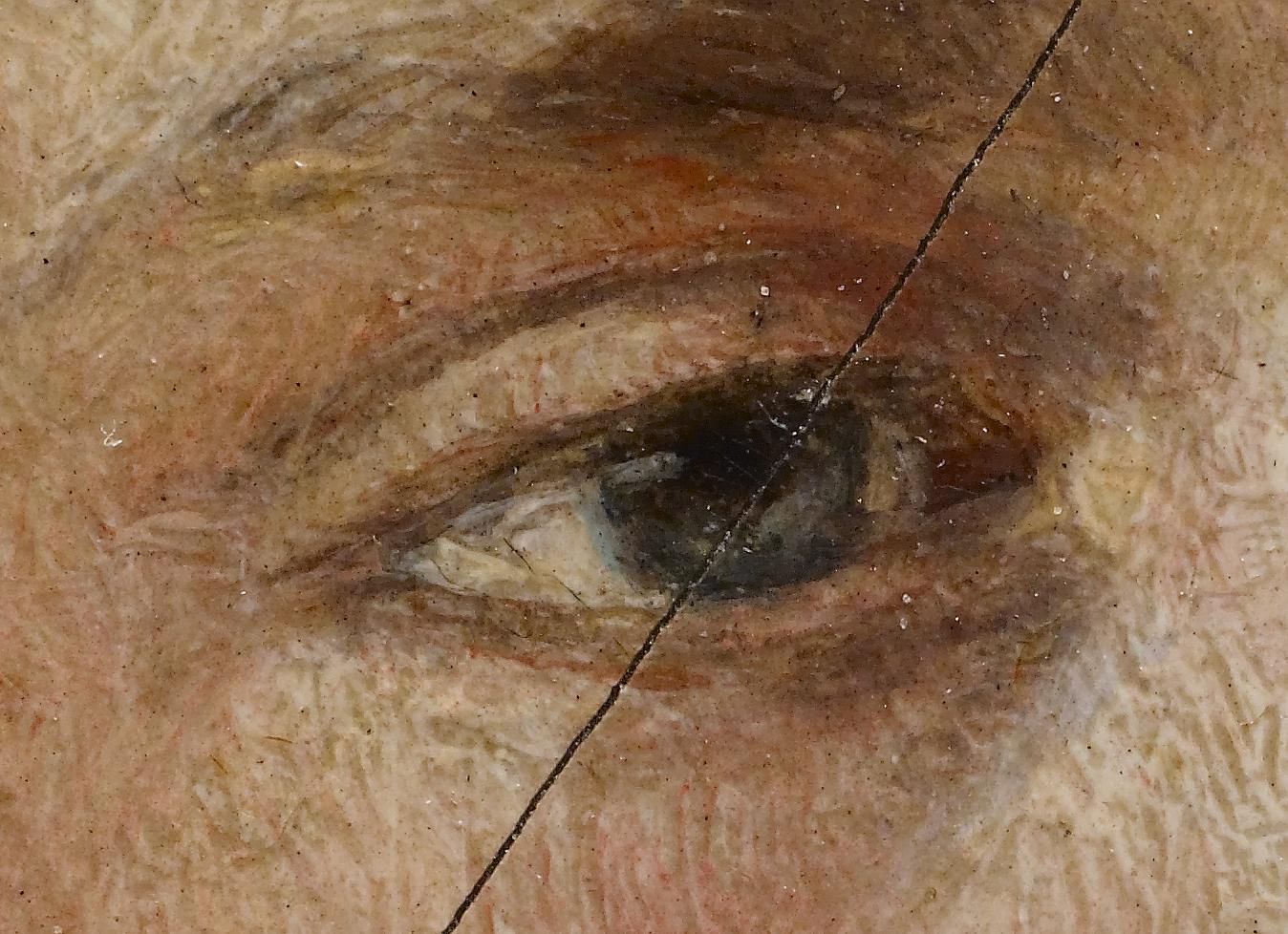Self-Portrait with Flowered Wallpaper
(18th and 19th Centuries )
Woodville painted himself several times during his short career. In this charming small work on panel, the artist sits in a parlor chair, facing the viewer while looking off to the left. His casual but fashionable attire includes a haphazardly buttoned tan jacket, a white shirt with black bow tie, a gray vest, and blue-green trousers with a checkerboard pattern - the height of contemporary fashion. Woodville holds an awkwardly proportioned black top hat in his green-gloved left hand; his ungloved right hand frames his face in a gesture of contemplation. The light brown wallpaper, with its repeating pattern of bouquets of pink roses, places the scene squarely in the domestic realm.
Notable in this painting, as in others by the artist, is the contrast between the broadly worked clothing and awkward proportions of the headwear and the miniaturist technique of the carefully rendered face. The racially charged "science" of phrenology popular in the early decades of the nineteenth century held that inner character showed in external signs, particularly the head, "the seat of the intellectual . . . and moral organs." Woodville painted his own visage with loving detail, giving himself the broad forehead, aquiline nose, and white skin touched with color held up as the Anglo-Saxon ideal. The hand-to-face pose, suggesting pensive introspection, is found frequently in works after photographs during this period, as it held the head still through the long exposure the medium required. Woodville's career coincided with the popular introduction of the daguerreotype portrait; already in 1842, one of his professors at the University of Maryland Medical College, William A. E. Aiken, dabbled in the new technology.
A photographic portrait of the artist from Düsseldorf (location unknown) shows that the painting was true to life. A Baltimore schoolmate remembered Woodville was "of aristocratic lineage, courtly manners and very handsome, he was essentially the artist." Already in Baltimore, he was sensitive to his appearance, and in Germany, his young wife noted in her ledger books numerous expenditures typical of a man of fashion: gloves, cravats, and costumes along with club dues, models, art supplies and "segars."
Provenance
Provenance (from the French provenir, 'to come from/forth') is the chronology of the ownership, custody, or location of a historical object. Learn more about provenance at the Walters.
Mr. and Mrs. Kurt Versen, prior to 1989 [by descent, from the artist]; Walters Art Museum, 1989, by gift.
Exhibitions
| 2013 | New Eyes on America: The Genius of Richard Caton Woodville. The Walters Art Museum, Baltimore; Mint Museum of Art Uptown, Charlotte. |
Geographies
Germany, Dusseldorf (Place of Origin)
Measurements
H: 9 1/8 x W: 6 7/8 in. (23.2 x 17.5 cm); Framed: H: 13 11/16 x W: 11 3/16 x D: 2 13/16 in. (34.7 x 28.4 x 7.1 cm)
Credit Line
Gift of Mr. and Mrs. Kurt Versen, 1989
Location in Museum
Not on view
Accession Number
In libraries, galleries, museums, and archives, an accession number is a unique identifier assigned to each object in the collection.
In libraries, galleries, museums, and archives, an accession number is a unique identifier assigned to each object in the collection.
37.2644








